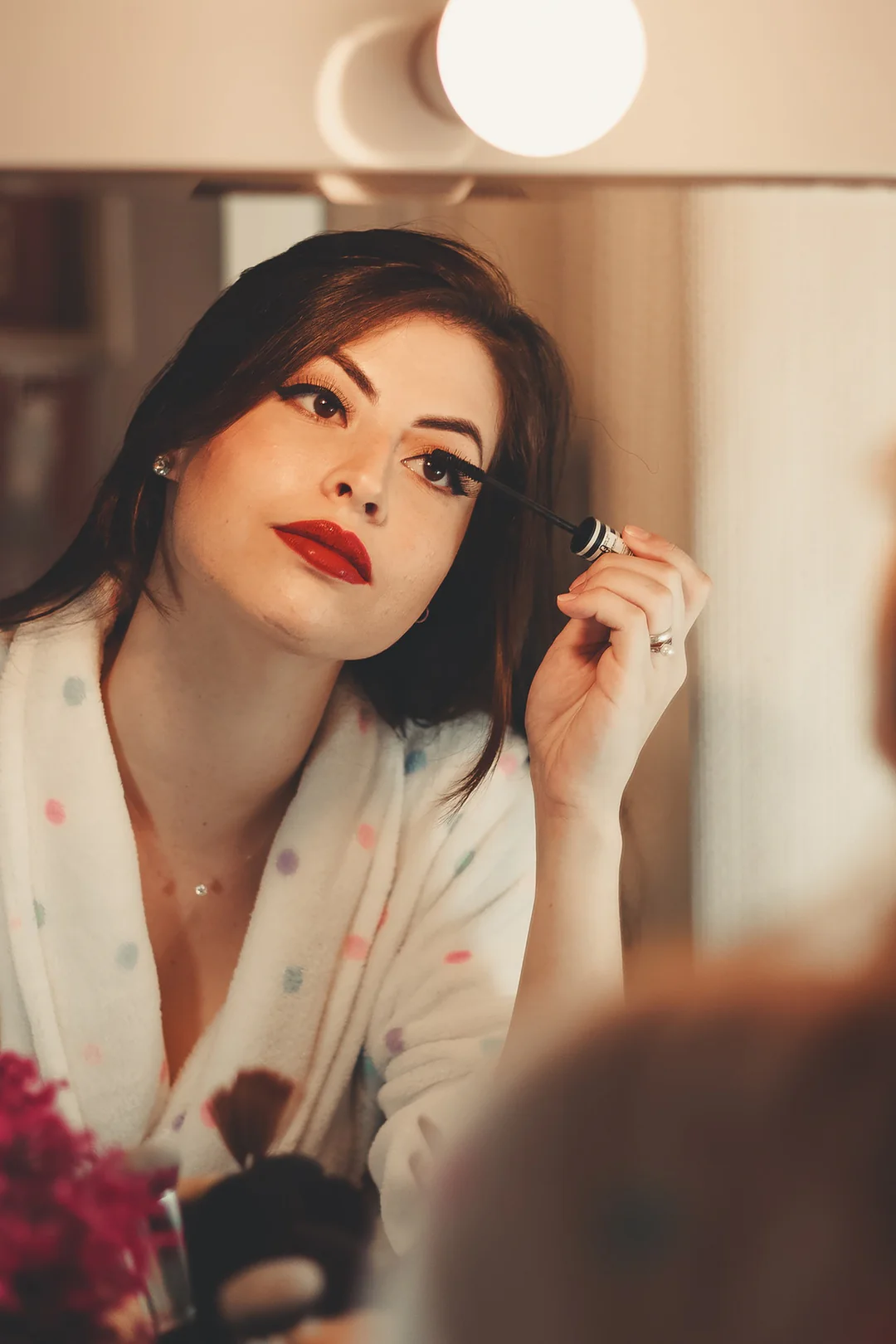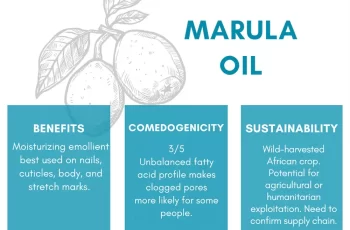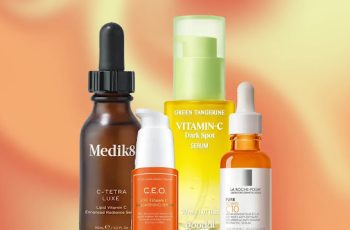Is my skin dry or dehydrated?
Confusing dry skin with dehydration is a common mistake that even the most ardent skincare fanatics make at times. But what exactly is the difference between the two? Should they be treated differently? Do they require specific ingredients to combat the discomfort they can cause to the skin? Luckily for you, we’ve done some research and have the answers for you in today’s post on how do I know if my skin is dry or dehydrated.
So, let’s get started to learn more!
How do I know if my skin is dry or dehydrated?
To better understand these skin concerns, I’ll briefly explain the basic structure of the skin and what it needs to stay healthy. The outer layer of the skin, which comprises a protective barrier, can only function properly when the right amount of water and oil are naturally present on the skin. However, there are many factors that can affect this, such as damage from free radicals, pollution, central heating, climate and weather. There can also be skincare formulas and ingredients that reduce or disrupt water and oil levels, such as overuse of chemical peels, improper use of retinol, and more. Once the water and oil levels drop, your skin becomes dull, dry or dehydrated and can easily become damaged.
How to tell if you have dry skin
Dry skin is actually a skin type that is known to have fewer sebaceous glands, which are essential for maintaining healthy skin conditions.
If you have dry skin, your skin will start to feel tight and uncomfortable about 30 minutes after cleansing
Sometimes flaky, dry patches of skin will appear on your face
Dry skin often shows signs of aging, such as fine lines and wrinkles
How to tell if your skin is dehydrated
Dehydrated skin lacks water, not oil
Dehydration is a skin condition, not a skin type, and all skin types can suffer from dehydration
Due to lack of water, fine lines will appear on the surface of the skin, and dehydrated skin will appear older
Dehydration is caused by external factors such as weather, environment, diet, etc.
If you are still a little confused and can’t figure out what exactly you have, you can do the cheek test. Place your fingers on your cheeks and press upward on the skin. If a wrinkled texture appears, it means that your skin cells are lacking water and your skin is dehydrated. You may also notice that dehydrated skin looks dull and has a lot of inflammation, congestion, and redness, unlike dry skin, which is usually more uncomfortable the drier it gets.
How to Treat Dry and Dehydrated Skin
As I mentioned before, dry and dehydrated skin are two very different things, but treating them is surprisingly similar.
Exfoliation
Since both skin types can look noticeably dull, adding exfoliation to your routine will improve the overall appearance of your skin. You can choose between physical or chemical exfoliation, as both help remove the buildup of dead skin cells that often form a barrier on the skin, preventing moisturizers or hydrating products from penetrating into the underlying layers of the skin.
Invest in a Hydrating Serum
Skin ingredients like hyaluronic acid, niacinamide, and others are great for hydrating the skin. They are all humectants that lock moisture into the skin, making the complexion look plumper, younger, and providing a full complexion.
Pay Attention to Weather and Seasonal Changes
As the winter months approach, you’ll find that dry skin requires extra care, and those who often suffer from dehydrated skin should pay close attention to how their skin looks and feels. Drops in temperature and changes in humidity can wreak havoc on your skin, leaving it stressed, inflamed, itchy, prone to redness, and with less sebum production. Replacing your nighttime moisturizer with a product that’s rich in highly hydrating ingredients and has a thicker texture will help keep your skin healthy.
Don’t steam!
Skin moisturizers have become increasingly popular in recent years, and for good reason! By steaming your face, you can maximize hydration, restore your skin’s barrier, and give it its most amazing, healthy glow.
Keep it up!
To ensure you combat any signs of dryness or dehydration, you need to follow a good skincare routine that includes all the steps, tips, and ingredients I’ve shared with you. This means that the protective barrier is working properly and the oil-water balance is balanced.
Why do I have such dry skin despite moisturizing and drinking water?
You’ve probably already taken steps to ensure your skin is well hydrated and you’ve been drinking the right amount of water every day. So it’s no surprise that you’re frustrated when you find that your skin still looks and feels dry. Maybe even a little dehydrated. This has to do with the fact that the skin is the largest organ in the human body, but surprisingly it doesn’t absorb the most water. The benefits of the water you drink go directly to your vital organs like your heart, lungs, liver, etc. Unfortunately our skin comes last, which causes it to rely mostly on topically applied ingredients. It just takes longer for your skin to reap the benefits of these moisturizing formulas, and of course don’t forget to drink enough water throughout the day.
I hope today’s blog answered some of your questions about dry skin and dehydration. It might be a little confusing, but I’m sure you’ll get the hang of it! Don’t forget to visit us on Instagram!
DQH Knowledge drop: In your 20s, your skin cell turnover decreases. (Cell turnover is a key component in keeping your skin youthful.) You know what else slows down? Your collagen production. Starting in your 20s, collagen decreases by about 1 percent per year. Should you want to prevent fine lines and wrinkles, start by eliminating behaviors that contribute to premature aging. “If it’s bad for you, it’s bad for your skin,” says dermatologist Michel Somenek.
“Cigarette smoking reduces blood flow to the skin and causes premature wrinkling and a dull skin texture. Making the repeated pursed motion to inhale can also cause smoker’s lines. Alcohol and recreational drugs are toxins for the skin that damage its cellular structure and DNA,” Somenek tells us. “The faster you eliminate vices while you are young, the better chance your skin and body have to recuperate.” Also, adopting an anti-aging routine in your 20s is key. After all, the best offense is a good defense. We spoke to Somenek and experts Joshua Ross and Audrey Kunin to find out more.
Keep reading for the best anti-aging products for your 20s, according to skincare professionals.
Sunscreen
“We all know that the sun is the number one cause of skin aging and starting the prevention in your 20s is very important,” Ross says. “The majority of your sun damage won’t start to appear until you’re in your 30s, so don’t wait until you see it surface or you’ll be behind the curve. Stay ahead of it with a good-quality zinc-based sunscreen worn daily.”
Farmacy Green Defense Daily Mineral Sunscreen
An invisible sunscreen with SPF 30, plus botanical extracts meant to protect skin with tons of antioxidants. Bonus: It’s clean and fine to use under makeup.
Bareminerals Complexion Rescue™ Tinted Moisturizer Broad Spectrum SPF 30
Although we recommend you use your SPF and moisturizer separately, we also understand moments when you don’t have time or energy for that extra step. For those times, this bareMinerals moisturizer is a great thing to have on hand.
Vitamin C Serum
“A great introduction to anti-aging is to start with a vitamin C serum in your morning skincare routine,” Ross says. “It’s a powerful antioxidant that will neutralize free radicals and brighten the skin.” He adds that it’s a great way to counteract the effects of the sun’s harmful rays, which, as previously mentioned, are among the biggest causes of premature aging.
Drunk Elephant C-Firma™ Vitamin C Day Serum
The Drunk Elephant C-Firma is a lightweight serum that promises to give skin a glow by combining the brightening powers of vitamin C with ferulic acid, l-ascorbic acid, and vitamin E. The included sodium hyaluronate is meant to replace hydration loss, so you shouldn’t have to deal with any irritation.
Sunday Riley C.E.O. Rapid Flash Brightening Serum
This potent serum is jam-packed with vitamin C (15 percent, to be exact), which means it’s a potential superstar at both brightening skin and dousing it in antioxidants.
Peptides
Using peptides on your skin has many benefits, says Somenek. “The skin barrier is what defends the body against pollution, UV rays, bacteria, and toxins. It can be damaged by several everyday factors. Using topical peptides aids in building a stronger barrier,” he says. “Peptides comprise elastic fibers, which are a type of protein. These fibers help to make skin appear taut and firm. Peptides can also help repair damaged skin, relieve inflammation, and even out skin tone. Some peptides can kill acne-causing bacteria that is common in 20-somethings.”
Kunin agrees, saying, “Peptides are an excellent entry point for supporting collagen.” She recommends looking for face and eye treatments that contain these collagen-boosting powerhouses.
Charlotte Tilbury Magic Eye Rescue Cream
This Charlotte Tilbury super-emollient eye cream has a base of coconut oil and shea butter (read: it’s incredibly hydrating). Botanicals plus peptides are meant to help reduce dark circles and boost collagen, respectively.
This creamy moisturizer serves up potent collagen-boosting peptides and pycnogenol, and antioxidant-rich vitamin C. “Instead of sitting on top of the skin, peptides penetrate the outer layer so they go deep. The ‘signals’ they send tell the cells to produce elastin and collagen, which are needed for youthful-looking skin,” explains Somenek.
At-Home Peel Pads
Remember that skin cell turnover fiasco we talked about earlier? One way to help support it is by exfoliating. “Exfoliation is important to help keep skin fresh and luminous,” Kunin says. She recommends using at-home peel pads as an easy and effective way to exfoliate.
“The goal in your 20s is to fight the slowing pace of cell turnover. It is wise to use products that gently exfoliate, yet still remove oil and other impurities. Products that have Alpha Hydroxy Acids (AHA) or Beta Hydroxy Acids (BHA) are a good choice.”
According to Somenek, you should only exfoliate two to three times a week. “People of all ages are guilty of over-exfoliating and that can be too much of a good thing,” he says.
Dermadoctor Kakadu C Intensive Vitamin C Peel Pad
A few swipes of this Derma Doctor powerful peel pad promise to leave your skin glowing and smooth, thanks to the seven (yes, seven) types of chemical exfoliants, including AHA and BHA. It also contains vitamin C via Kakadu plum extract for added brightening and antioxidant protection.
KEY INGREDIENTS Kakadu plum extract is sourced from the Kakadu plum, a fruit grown in northern Australia. It contains vitamin C, which restores the skin’s natural barrier, increases collagen production, and soothes irritation.
Dr. Dennis Gross Skincare Alpha Beta® Universal Daily Peel Pads
These are the gold standard of peel pads, with a cult following and over 900 five-star reviews on Sephora. They’re easy to use and contain a blend of anti-aging exfoliating acids.
Emollient Night Cream
“In your 20s, you need to start upping the hydration in your skincare routine. You may have been cautious of over-moisturizing because of acne in your teens, but as you enter your 20s, your skin transitions and becomes drier,” Ross says. “I recommend an emollient night cream added into your evening skincare regimen.”
“Twenty-somethings need to make sure that they are not using creams that will clog their pores and cause excess oil production,” says Somenek. Opt for non-comedogenic products.
Cerave Skin Renewing Night Cream
One great choice is the CeraVe Skin Renewing Night Cream, which is a non-comedogenic night cream that leaves skin soft and glowy. It combines the moisturizing powers of ceramides and hyaluronic acid.
RoC Retinol Correxion Max Hydration Creme
“The best night cream ingredients contain retinol, benzoyl peroxide, and/or salicylic acid or hyaluronic acid. The goal is to moisturize, yet remove excess oil,” says Somenek. This Roc Retinol Correxion cream fits the bill as it contains both hyaluronic acid and retinol so it promises to moisturize while also being non-comedogenic.



